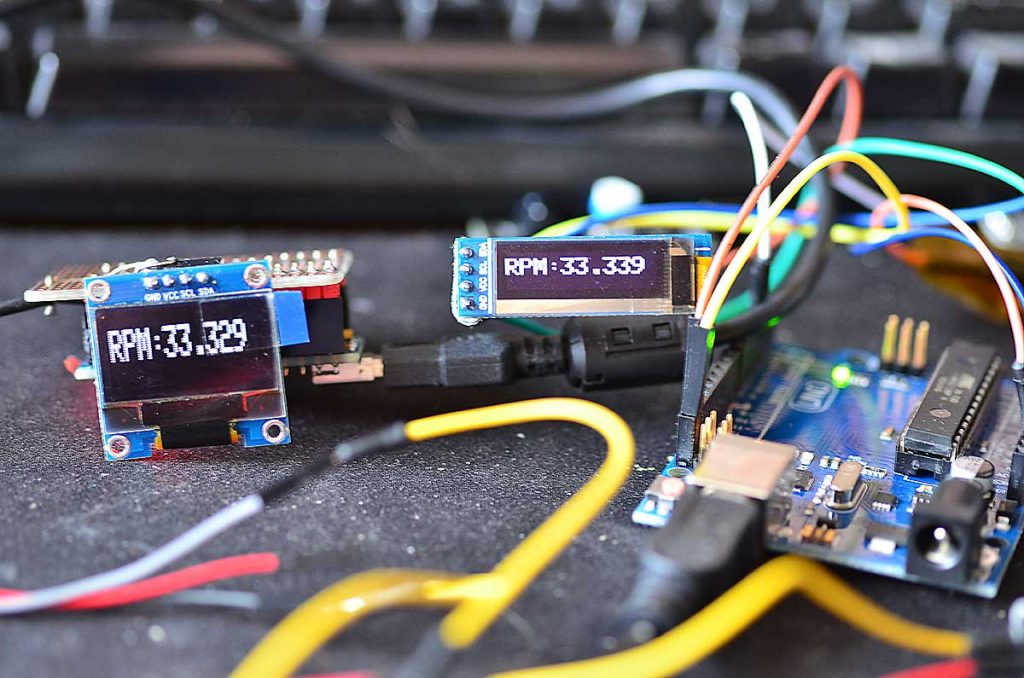
How to Connect a Tachometer to an Outboard: Step-by-Step Guide?
Share
For boating enthusiasts and tech professionals alike, understanding how to connect a tachometer to an outboard engine is essential. A tachometer provides crucial information about engine performance by measuring its revolutions per minute (RPM). This valuable feedback allows users to optimize fuel consumption, engine efficiency, and performance.
In this comprehensive article, we will delve into the steps required for connecting a tachometer to an outboard engine, offering practical insights and tips along the way. Whether youre a seasoned tech professional or a passionate hobbyist, this guide will assist you in achieving accurate readings and enhancing your boating experience.

Understanding the Basics of Tachometers
Tachometers are instruments that measure the rotational speed of an engine's shaft. In outboard engines, they play a crucial role in ensuring you engage the throttle effectively and maintain optimal engine operation. To fully grasp how to connect a tachometer to an outboard, its essential to understand the types of tachometers available.
Types of Tachometers
There are primarily two types of tachometers used in outboard applications:
- Analog Tachometers: These use a needle that moves across a dial to indicate the engine speed.
- Digital Tachometers: Digital displays show real-time engine speeds in numbers, often providing additional data such as voltage and fuel economy.
Gathering Necessary Tools and Materials
Before you proceed with connecting your tachometer, it is crucial to gather all necessary equipment to streamline the installation. Here is a list of essential tools and materials:
- Digital or analog tachometer
- Wire strippers and connectors
- Multi-meter for testing
- Insulated wire (with the right gauge)
- Electrical tape
- Mounting brackets (if necessary)
Understanding the Wiring Configuration
It's important to familiarize yourself with the wiring configuration of both your tachometer and the outboard engine. Most tachometers usually have several essential connections:
- Positive Power Supply (12V): This connects to the battery or the ignition switch.
- Ground: This must be connected to the engine or the boat's ground system.
- Tach Signal Wire: This wire connects directly to the engine's ignition coil or the alternator output.
- Lights Wire: If your tachometer features backlighting, this wire will connect to the boat's navigation lights or console lights.
Step-by-Step Guide to Connecting the Tachometer
Now that you have the necessary tools and materials, let's begin the process of connecting a tachometer to your outboard engine.
Step 1: Disconnect Battery Power
Before starting any installation process, always disconnect the battery power to avoid any electrical shock or short circuits while working on your boat's electrical system.
Step 2: Install the Tachometer
Mount the tachometer on your console or in a location that is easily visible while operating the boat. Using the mounting brackets, secure the tachometer in place.
Step 3: Connect the Wiring
- Connect the Positive Wire: Attach the positive power supply wire from the tachometer to the batterys positive terminal or to the ignition switch.
- Connect the Ground Wire: Similarly, connect the tachometer's ground wire to the ground terminal of the battery or to another grounding point.
- Attach the Signal Wire: For most outboard engines, the tach signal wire must connect to the ignition coil's positive terminal. If unsure, check the engines manual or refer to resources like how tachometers work.
- Connect any Lighting Wire: If your tachometer has a backlight, connect this wire to your boat's lighting system.
Step 4: Test the Connections
After finishing the wiring connections, its time to test whether everything is functioning correctly. Reconnect the battery and turn the ignition on without starting the engine. The tachometer should light up and display initial readings.
Step 5: Start the Engine
With all connections double-checked, start the outboard engine. The tachometer should now display RPM readings. If the readings are inaccurate or not functioning, consider referring to how to test a tachometer on a boat.
Step 6: Final Adjustments and CalibrationOnce you have verified the functionality, you might need to calibrate the tachometer according to the specifications mentioned in the user manual. This may involve adjusting dip switches or settings within the device.
Troubleshooting Common Issues
Should you encounter any issues or discrepancies in readings, here are some troubleshooting tips:
- No Reading: Check all connections, especially the signal wire connected to the ignition coil.
- Inaccurate Readings: Ensure that the tachometer is calibrated correctly as per the manufacturer's guidelines.
- Fluctuating Readings: This may indicate a faulty connection; inspect all wiring for signs of wear or damage.
Safety Precautions When Working with Tachometers
Safety should always be your top priority when working with electrical components and outboard engines. Here are some safety measures to consider:
- Wear safety gear like gloves and goggles while working.
- Ensure your boat is on a stable surface before connecting any electrical equipment.
- Always disconnect the battery before performing any installation to prevent electric shock.

Frequently Asked Questions
1. Do I need a professional to install my tachometer?
Installing a tachometer can be done by most DIY enthusiasts. However, if you're uncertain about the electrical connections, its best to seek professional assistance.
2. Can I connect a tachometer to a two-stroke engine?
Yes, tachometers can be connected to both two-stroke and four-stroke engines, but the wiring may vary. Always consult the specific tachometer guide for your engine type.
3. What is the average cost of a tachometer?
The cost of a tachometer can range from $50 to $200, depending on the brand and technology of the device. High-end models may offer additional features and accuracy.
For detailed information on taking care of tachometers, visit how a tachometer works and other related resources.
